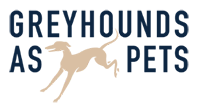Below are some simple, practical, and preventative steps you can take to ensure your return to work or routine post lockdown is as smooth as possible for the hounds in your life, rather than distressing.
- Maintain some semblance of your typical routine. Even if you pretend to go to work; get dressed, put your shoes on, grab your keys, drive out the gate, check the mailbox….and then come home. Or if your dog usually gets fed breakfast after they hear your morning alarm go off, keep little routines like this going.
- Leave your dog at home for 5 minutes to a couple of hours to keep them thinking you’ve left as usual. Go for a walk without them, sit in the car and video chat with mates, read, watch something thing…whatever it is, just get out the house so the dog spends at least some time alone each day.
- Even something as simple as your dog spending some time alone each day while you’re still at home, whether in the garden, behind a closed door, behind a baby gate or in a crate so they can see you but can’t access you.
- You can encourage your dog to spend time away from you and reward independence by providing a delicious treat. A raw meaty bone, a stuffed kong, a food dispensing toy, long lasting edible chew, or food scattered around the garden for them to sniff out. You can tether some of these items e.g. to post on the other side of the garden, so the dog can’t bring them back to eat beside you, or in a crate in another room.
- Reduce over exciting activities and extra walks in the lead up to your return to work so they can adjust to the usual levels of exercise and interaction.
- If you’re adding more training and enrichment into your dog’s day (awesome!) then think how you can sustain some of this stimulation when you go back to work so they don’t get left high and dry.
On a separate, but related note, for any recently adopted dogs or dogs in foster homes, it may take a while for them to cope being left for longer periods of time.
It’s important to understand that their whole world has been turned upside down and they are likely experiencing higher levels of stress than usual as they make the transition to pet life.
The first step to create a solid bond and to help the dog feel safe and secure. Essentially, this means be available for your dog as much as possible and reward them for interacting with you. Once they feel safe then independence follows, it can be scary to be in a new place and if your dog feels comforted by your presence then that’s awesome. Gradually integrate your dog slowly into their new surroundings, and gradually increase the time they are left alone.
